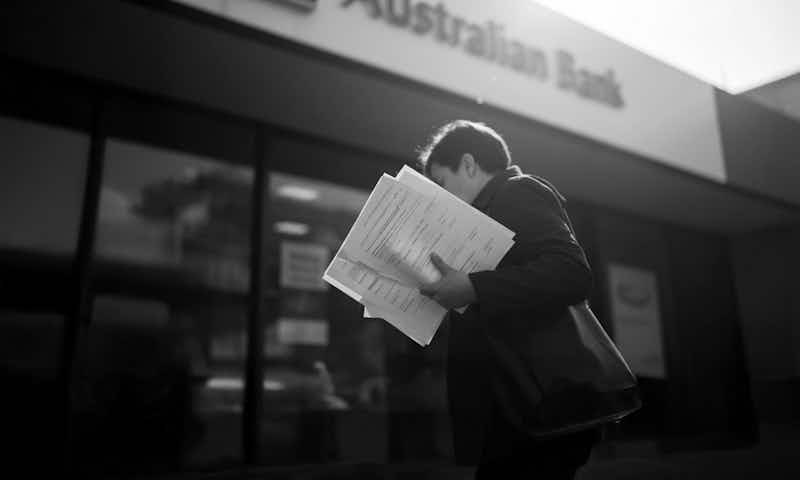How can a bankruptcy end?
For those unfamiliar with the term "bankruptcy", it refers to a legal process that provides individuals who are unable to meet their financial obligations with a chance to resolve their debts and make a fresh start. Put simply, it's a reset button. Unlike in other parts of the world, where bankruptcy applies to both companies and individuals, in Australia, bankruptcy only applies to people, not companies.
In previous articles, we have discussed how a person becomes bankrupt. This article focuses on how people can exit bankruptcy.
Discharge from bankruptcy
A bankruptcy typically concludes with the bankrupt individual being discharged from bankruptcy, marking the end of the legal process. This discharge occurs automatically three years after a Statement of Affairs is lodged. Neither the bankrupt individual nor the bankruptcy trustee needs to take additional actions to obtain this discharge.
The bankrupt estate may continue after discharge while the bankruptcy trustee finalises the estate. The discharged bankrupt may have ongoing obligations, although they are no longer considered "bankrupt."
When is a bankrupt discharged?
A bankrupt is automatically discharged three years after their completed Statement of Affairs is filed with the Australian Financial Security Authority (AFSA), unless the bankruptcy trustee files an objection:
Debtors Petition: If bankruptcy begins through a debtor’s petition (i.e. the person voluntarily declares themselves bankrupt), the Statement of Affairs must be filed simultaneously. Thus, the bankruptcy ends three years after the debtor’s petition is accepted.
Sequestration Order: If bankruptcy begins via a sequestration order (a court order), the Statement of Affairs will not have been filed. The bankrupt must complete and lodge the Statement of Affairs with AFSA. Any delay in filing extends the bankruptcy period. If the Statement of Affairs is never filed, the bankruptcy continues until the bankrupt's death, though the estate’s conduct will persist until completed.
Can a bankrupt exit bankruptcy before discharge?
Yes, bankruptcy can be annulled, effectively reversing it as if it never happened.
How is bankruptcy annulled?
Bankruptcy can be annulled in three ways:
Full payment: The bankruptcy trustee obtains sufficient funds to pay all debts and costs of the estate.
Section 73 proposal (composition): Creditors accept a Section 73 proposal from the bankrupt.
Court order: The bankrupt convinces the court that the bankruptcy should never have commenced.
Debts and costs of the bankrupt estate
The costs and debts of the bankrupt estate include:
All provable debts of the estate.
The realisation charge, currently 7%, payable to AFSA.
The bankruptcy trustee’s expenses and remuneration.
Any other statutory costs of the estate.
To annul a bankruptcy by paying all debts and costs, the trustee must have enough money to cover pre-bankruptcy debts, bankruptcy costs, and statutory charges. This typically occurs when the sale of the bankrupt’s asset(s) provides sufficient funds to discharge all debts or when a friend or relative provides the necessary funds.
What is a Section 73 proposal?
A Section 73 proposal (or Composition) is a formal offer presented to creditors under Section 73 of the Bankruptcy Act. It allows the bankrupt to propose an alternative to continuing the bankruptcy and usually comprises of an offer which may be less that the full amount owing to creditors. If a Section 73 proposal is put forward, the trustee will prepare a report to creditors which compares the offer being proposed under Section 73 to that which may be available if the person were to continue to remain a bankrupt. If creditors accept the Section 73 proposal, the bankruptcy ends and is replaced by an obligation under the Section 73 agreement.
Why would a court annul a bankruptcy?
A court might annul a bankruptcy if it is shown that the bankruptcy should not have commenced. This could happen if:
The proper legal process was not followed in initiating the bankruptcy.
There was no debt owed to the petitioning creditor at the time.
The bankrupt is actually solvent, demonstrating sufficient liquid assets or borrowing capacity.
A bankrupt who successfully obtains an annulment through the court should be aware that the ex-trustee has the right to use any assets in their possession to cover outstanding remuneration and costs. If these are insufficient, the ex-trustee may seek payment from the former bankrupt.
Conclusion
For more information about the bankruptcy process, feel free to reach out to our friendly Worrells team who will be able to assist your clients dealing with their personally financial circumstances.




